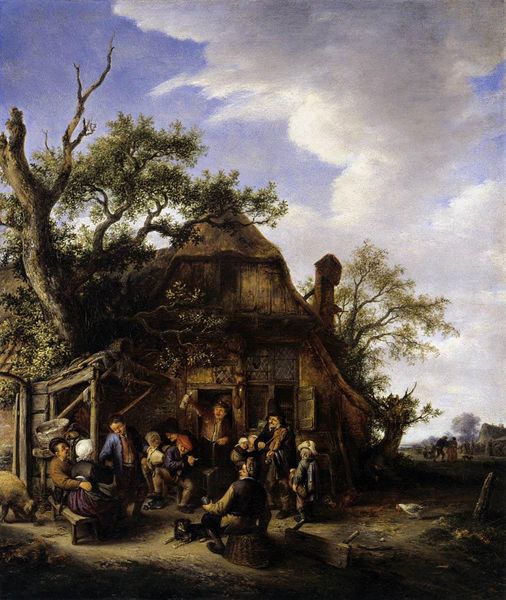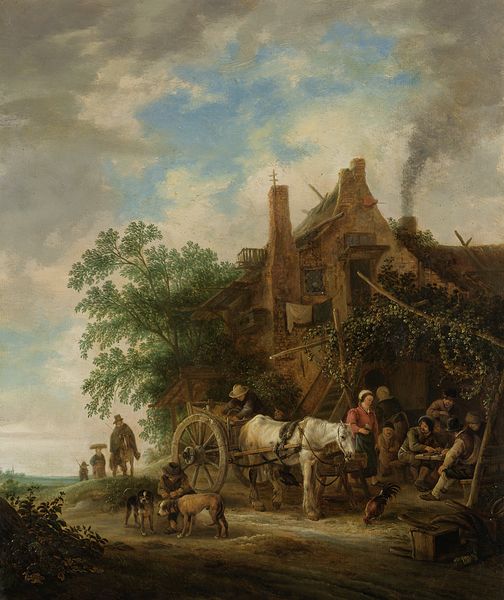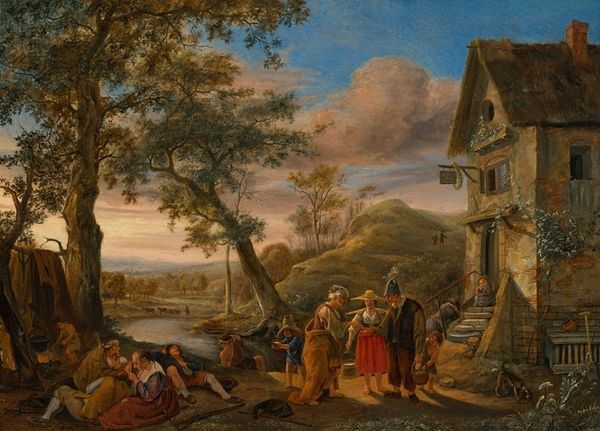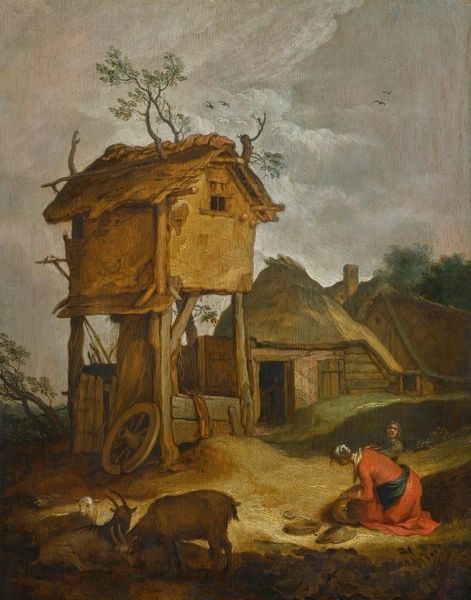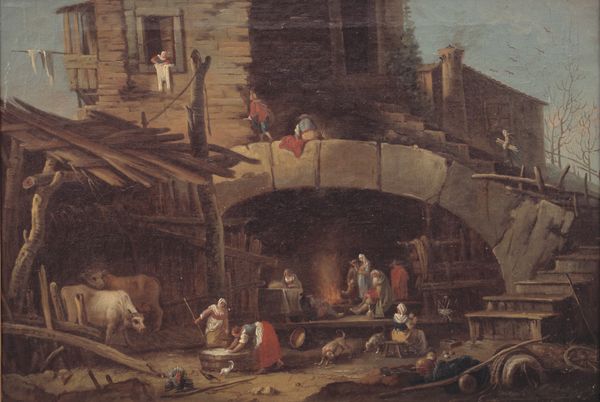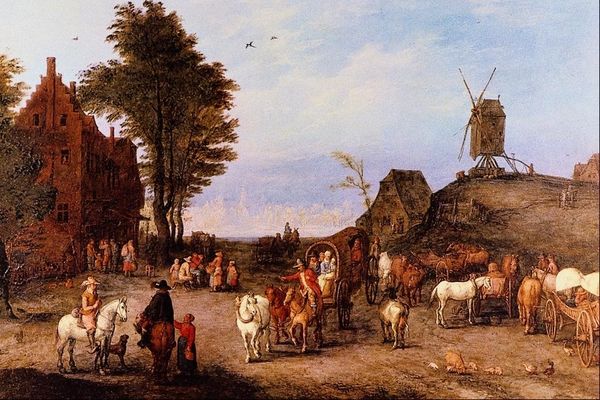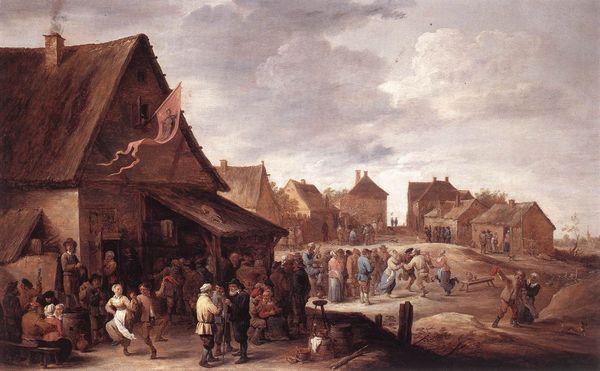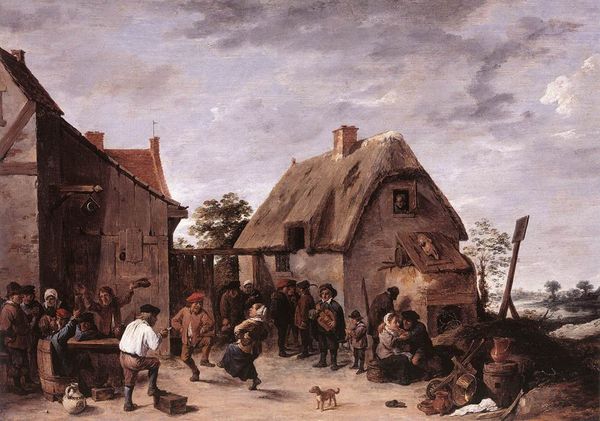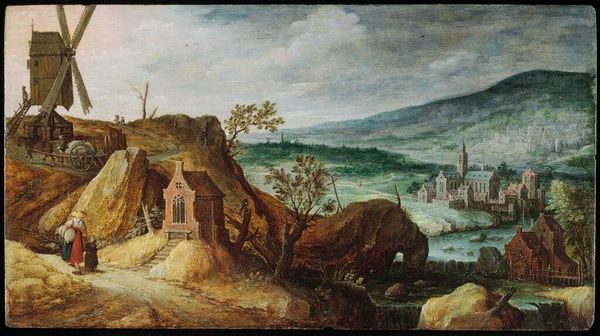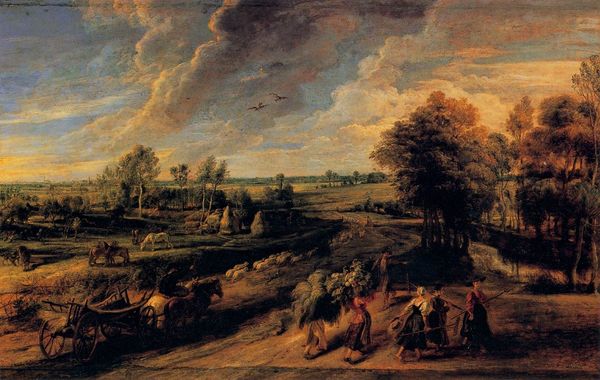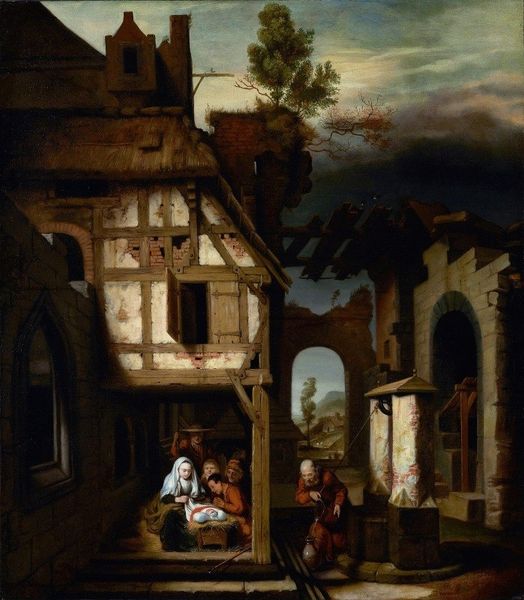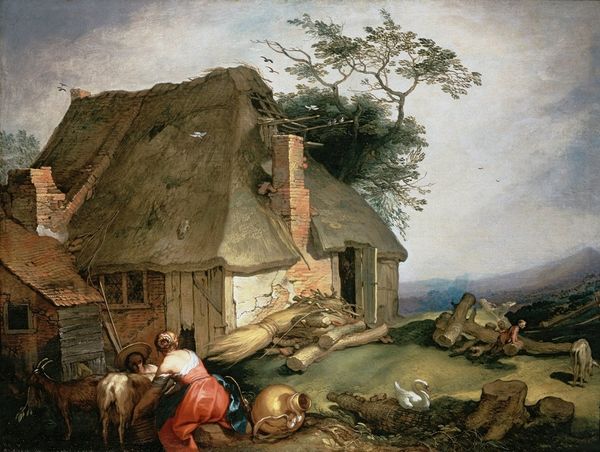
painting, oil-paint, architecture
#
baroque
#
dutch-golden-age
#
painting
#
oil-paint
#
landscape
#
house
#
figuration
#
oil painting
#
genre-painting
#
architecture
Copyright: Public domain
Adriaen Brouwer created this scene of men drinking in a village, with oil paint, in the Netherlands during the early 17th century. The work captures a moment of everyday life, but it also speaks to the social conditions of the time. Drinking and gathering were central to the peasant culture of the Netherlands. Scenes like this offer a glimpse into the lives of ordinary people, their leisure, and social bonds. However, it's important to consider the context in which Brouwer was working. The Netherlands was undergoing significant social and economic changes, with a growing divide between urban wealth and rural poverty. Brouwer's tavern scenes can be seen as both a celebration and a critique of peasant life, and these paintings have a long institutional history, often shown in the homes of the wealthy and in public museums, enjoyed by people who may have never lived this lifestyle. Historians use a wide range of sources, from parish records to economic data, to understand the relationship between art and society. By exploring the social and cultural context of Brouwer's work, we can gain a deeper understanding of its meaning and significance.
Comments
No comments
Be the first to comment and join the conversation on the ultimate creative platform.
